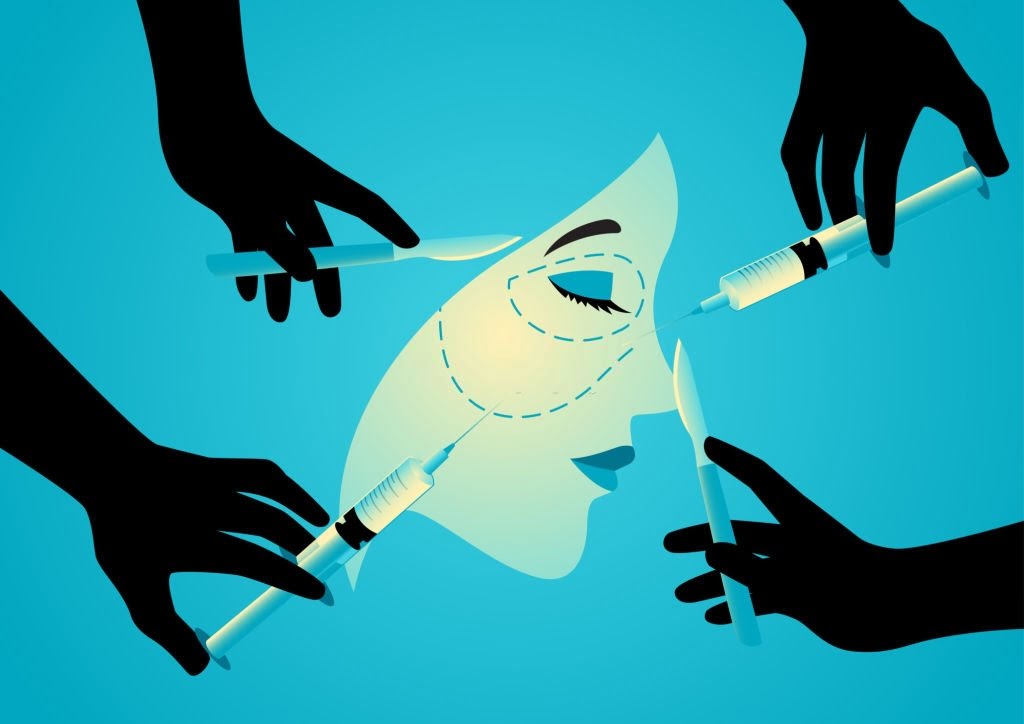The Role of Beauty in India: How Plastic Surgery Changes How We View Ourselves

Author: Chinnu Cheriyan
Plastic surgery is a wide field that has taken the world by storm. More countries are offering the procedure which has led to publicity from medical tourists. One of these countries is India. However, despite the growing popularity, there is a lack of literacy when it comes to the topic. People have unrealistic expectations of the procedure and are often unsatisfied with the results. The current study seeks to understand why this occurs as well as why people undergo plastic surgery at all. In addition, the current study also examines the standards of beauty in Indian culture, as well as how it has affected the lives of many men and women, who feel pressured to look and behave in a certain way in order to fit into society. I conclude with the measures that can be taken so that people have better expectations of plastic surgery, so that they can be satisfied with their bodies.
Plastic surgery is a widely popular field that has advanced rapidly over the past few years. It can be divided into many subfields in order to meet the needs of an individual. Many countries have different codes of conduct in regards to plastic surgery. For example, South Korea advertises plastic surgery in many public places. Furthermore, many people are encouraged from an early age to change aspects of their appearance. Following their lead, more countries are beginning to endorse plastic surgery as it is a practice that makes millions of dollars. One country that has been shown to have increasing rates of plastic surgery is India. In fact, the standards of beauty in Indian culture have also evolved and has led many men and women to make drastic changes to their bodies.
In order to understand the prevalence of plastic surgery in Indian culture, it is important to understand the evolution of beauty standards. The current study will analyze the rise of plastic surgery in Indian culture and analyze prominent standards of beauty. As India became modernized, people gained access to western lifestyles through the use of social media, television programs, and other forms of entertainment. Many Indian celebrities adapted western beauty techniques, such as facial hair removal and skin lightening. Citizens became interested in these techniques, and thus spread western ideas of beauty. The current study will investigate how this affected the lives of young men and women, who longed to fit into society’s expectations of beauty. The researchers predict that the expectations of beauty will lead many young people to take drastic measures to change their appearance, as well as have a negative influence on self-esteem. The current study will also investigate the psychology behind plastic surgery. More specifically, people who pursue plastic surgery may be insecure about certain aspects of their body and may suffer from body dysmorphia. Finally, the current study will investigate how people understand plastic surgery in modern society. While many people understand the potential risks of this procedure, there are some who do not understand how severe the consequences can be.
Past research examining standards of beauty in India has found that both men and women are taking measures to change their physical features in order to fit the lifestyle of people living in the west. Slowly, more people across India are becoming conscious of their health as well as the various medical facilities they can take advantage of. According to Bhattacharya (2008), this change in behavior is due to the exposure of international fashion trends. One of the most popular trends in Indian culture is skin whitening. While there are activists who voice their disdain for this trend, skin whitening products are rapidly spreading in markets across the country. This indicates that beauty has become a staple of Indian culture. According to Ericksen and Billick (2012), an individual’s mental state plays a role as to why they pursue plastic surgery and other beauty trends. At first, Indians pursued beauty trends in order to eliminate infections and other blemishes. However, as of recent years, people are more interested in attracting the opposite sex and being seen as young.
In an experiment conducted by Hollyman and Lacey (1986), 11 women were interviewed prior to having plastic surgery, and again six weeks post-surgery. The researchers found that all of the women felt better about their bodies after the surgery. Particularly, the women had higher self-confidence as well as higher views of femininity and sexual attractiveness. It is important to note how the patients feel about their bodies prior to the procedure in order to feel satisfied with the results. In addition, research suggests that patients who are aware of unrealistic and realistic expectations of surgery are likely to be more satisfied with the results of the procedure (Ericksen & Billick, 2012). The researchers also suggest that those who have unrealistic expectations of plastic surgery have been advised to avoid it. Plastic surgeons may be able to determine who is fit to undergo the procedure. According to Ritvo and Melnick (2006), it is important to identify the goals of the patient. If the patient has unrealistic goals of the surgery, they are not suitable for undergoing the procedure. They identified a spectrum on which to place patients, that ranged from a healthy pursuit of change to maladaptive behavior.
According to Panse, Panse, Kullkami, Dhongde and Sahasrabudhe (2012), despite India being ranked as the fourth most popular country to offer cosmetic surgery, many citizens are uneducated about the risks and benefits of the procedure. In fact, many patients in India do not realize what plastic surgery means. The results of the study conducted by Panse et al. (2012) showed that, in India, many patients who have completed the procedure often asked when plastic surgery will be done and when plastic will be used. In television programs and advertisements, plastic surgery is often portrayed as glamorous and life-changing. However, the media does not portray the reconstructive aspect of it. Therefore, despite wanting to change aspects of themselves, many people are unaware of what plastic surgery or beauty products actually entail. Overall, people want to be seen as beautiful in order to be accepted by others. They will turn to the media in order to understand what must be done in order to meet their expectations. However, as prior studies have shown, they do not necessarily understand what these procedures will actually do to their bodies. Attempts should be made to teach the public about the risks of benefits of surgeries that change physical appearance.
In order to investigate the factors surrounding the pursuit of plastic surgery, the current study will examine previous research relating to this topic. Bhattacharya (2008) provides an overview of the struggle Indian men face to be accepted in society. She provided background as to how western beauty techniques spread into India and how this affected the lives of many men. There are descriptions of different skin care techniques, such as skin whitening and facial hair removal. Bhattacharya (2008) also provides evidence as to how beauty has become a business in the country. There are examples of how different brands such as Clarins and Vichy take advantage of this growing trend and launch their products in the country. Ericksen and Billick (2012) discuss one of the major reasons why cosmetic surgery is so popular throughout the world.
Despite wanting to be beautiful outwardly, an individual’s desire to pursue these procedures comes from their mental state. This study provides evidence as to how plastic surgery started as a way to remove facial blemishes, but has evolved into a desperate attempt to boost self-confidence. Hollyman and Lacey (1986) conducted a study to determine the psychological states of women prior and post plastic surgery. They suggest that cosmetic surgery can help people be more comfortable with their gender and sexuality. Panse et al (2012) examined how people in India understand plastic surgery. They found that Indians have a very poor understanding of what cosmetic surgery and highlighted the importance of educating the people of India about cosmetic procedures so that they can know what to expect as well as the risks and benefits. Ritvo and Melnick (2006) concluded that it is critical that surgeons highlight the goals of heir patients. They suggest that plastic surgery must be done for appropriate reasons. The researchers conclude that if the patient has unrealistic expectations, they will not be satisfied with their bodies and their psychological state will suffer. In addition, the current study also gathered interviews in order to gain a deeper understanding of the hardships many young people face in their desire to be viewed as beautiful by society.
The purpose of the current study is to understand how plastic surgery and beauty trends play a role in the lives of people in India. The researchers hypothesized that high expectations of beauty would lead many young people to resort to extreme measures in order to change their appearance. In addition, it would also have a negative effect on their self-confidence. According to one Indian woman, prior to being exposed to a verity of television programs, she had not experienced any problems with her self-image. For example, she had found body hair to be normal. However, after seeing how women are portrayed in billboards and movies, she found herself feeling ashamed when she saw another woman with hair on her arms and legs. She tore hair from her body, despite feeling immense pain from doing so. She also felt that she had to have an hourglass figure, thick eyebrows, long curly hair, and large breasts. She felt that all the blame fell upon Bollywood stars. According to her, the expectations of beauty for Indian women changed drastically in 1994 after Sushmita Sen and Aishwarya Rai won Miss Universe and Miss world, respectively. Their faces were plastered on billboards across the country, and caused many young women to want to imitate them. For example, one 13-year old girl wanted to wear smaller and tither clothing after seeing older women dress in that manner in movies. When asked why, she said it was because boys viewed those girls beautiful. It is evident that many women want to change aspects of themselves to attract the opposite sex, and not for their own benefit. However, as seen in previous studies, men experience many similar hardships as women.
Many Indian men find it difficult to be accepted by others due to the stress of having to live up to expectations. Even though they have different beauty standards than women, they also face criticism and are overwhelmed by the images seen in television programs and movies. For example, one of the things many men are criticized for is facial hair. Many Bollywood stars in North India lack facial hair and are often portrayed as handsome and sexy in the media. On the other hand, in South India, men with facial hair and often seen as strong and heroic. Therefore, many men face a dilemma and are conflicted as to which example they must follow. Another challenge for many men is height. In general, height is considered to be more important for men than women. Shorter women have a much easier time in society that shorter men. For example, shorter men are considered to be weak or even feminine. These types of negative stereotypes can be damaging to one’s mental state. According to prior studies, another challenge that men face stems from the color of their skin. Many Bollywood stars have light skin and advertise products that support that cause. In many movies, the hero with light skin is portrayed as a hero, and is also viewed as sexually attractive by the female characters. This adds to the stress that many men face, in that they must live up to these expectations by undergoing procedures and applying new beauty techniques.
Once again, there is evidence to support the claim that some individuals people do not change aspects of themselves for their own benefit. Rather, they think lowly of themselves and seek validations from peers and people of the opposite sex. Historically, it is common to engage in certain behaviors to please others. However, in certain cases, this can be seen as unhealthy or dangerous. One major example of this is plastic surgery. Past studies have shown that insecurity is common. However, in some cases, this can lead to body dysmorphia. People in this category have unrealistic expectations regarding plastic surgery. The procedure is mostly used to fix areas of the body that have been damaged due to injury. However, due to the rise of pop culture, it has been seen as a method of enhancing a person’s physical features. An individual who was once fine with their body can suddenly experience great shame. Researchers have provided evidence to support the claim that shame can lead to unrealistic expectations of surgery. Some believe that plastic surgery can save them from shame and allow them to be seen as sexually attractive. For example, women who have gone through surgeries to enlarge their breasts have a new found increase in self-confidence.
While it is healthy for a woman to be proud of her body and go through these procedures in order to love her own body, it is unrealistic to believe that a person will be more attractive to the opposite sex by enlarging or shrinking their body parts. Surgery can help you love yourself but it will not necessarily help other people love you. This is why plastic surgeons have become more aware and are conscious of patients who are not appropriate for the procedure. By identifying who is mentally adequate for surgery, satisfaction will be met. More specifically, people with unrealistic expectations of surgery will never be satisfied, no matter how many procedures they undergo. People will always want to change more aspects of themselves, because they will always look for more issues. Some studies have suggested that unsatisfaction stems from misunderstanding how plastic surgery is conducted how it works.
India is the fourth most popular country to pursue plastic surgery. Therefore, the procedure is extremely well-known among citizens. In addition, many tourists enter the country as medical tourists to undergo the procedure. One of the major reasons for this is money. Compared to the United States, medical facilities are much cheaper in India. However, even though cosmetic surgery is well-known in the country, most citizens have been shown to be illiterate as to what it means, Many Indians have misconceptions as to what the procedure is like, and expect it to magically turn them into beautiful beings. According to one study, many patients have asked when plastic will be used in the procedure. Some expect the procedure to give them a new face or enhanced features. In one case, a patient has expected the procedure to make them slimmer. While these things are possible, they are not easy and require a lot of time.
In addition, surgeons must take measures to make sure that the patient is fit for the procedure. Furthermore, even when the procedure is completed, patients must take an adequate amount of rest so that the body can recover. There have been cases where the body reacts negatively and rejects the changes that have been made. It is evident that there is a lack of knowledge in Indian culture when it comes to cosmetic surgery. Research has indicated that extra measures must be taken to ensure that people are aware of the risks and benefits of surgery. In addition, students who aspire to become surgeons must be able to fully explain everything to patients. These actions ensure that everyone has realistic expectations and will be satisfied with their bodies.
Overall, cosmetic surgery has taken the world by storm. It is popular and many countries throughout the world, and will likely continue to grow due to its impact on the economy. However, this does not necessarily mean everyone is suitable for the procedure. In addition, not everyone is suitable for undergoing the latest beauty trends. More specifically, people who suffer from poor self-esteem, body dysmorphia, or some other mental illness will find happiness through beauty techniques. This must come from acceptance of oneself. Only after coming to terms with oneself will people have realistic expectations of plastic surgery. Then, they will be satisfied with the results. Beauty will continue to evolve because it is a booming business, but people must also evolve alongside it.
References
Bhattacharya, P. 2008. Indian Men Seeking Male-specific Skincare: Indian Men’s Spending on Specialized Skin Care is Increasing as Their Drive for Youthful Looks and Grasp of Changing Beauty Standards Grow. Global Cosmetic Industry, 176(9).
Ericksen, W. L., & Billick, S. B. 2012. Psychiatric Issues in Cosmetic Plastic Surgery. Psychiatric Quarterly, 83(3), 343-352.
Hollyman, I. A., & Lacey, J. H. (1986). A Longitudinal Study of Women Undergoing Reduction Mammoplasty. British Journal of Plastic Surgery, 39(2), 222-224.
Panse, N., Panse, S., Kulkami, P., Dhongde, R., & Sahasrabudhe, P. 2012. Awareness and Perception of Plastic Surgery Among Healthcare Professionals in Pune, India: Do they Really Know What We Do? Plastic Surgery International.
Ritvo, E. C., & Melnick, I. (2006). Psychiatric Conditions in Plastic Surgery. Facial Plastic Surgery, 3, 194-197.







Responses